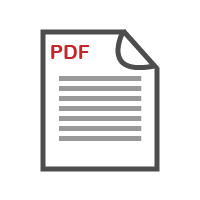Improving Written Assignments
for Teachers and Students
Written assignments are traditionally used as tool for effectively evaluating student understanding by requiring students to critically and actively engage with the content. Research has demonstrated that college students benefit the most from writing in context with term papers; yet, students rarely see the relevance of their papers, and many struggle with basic writing concepts. As an instructor, you can enrich the process and the outcomes by tweaking the presentation of requirements and expectations, as well as altering methods of assessment and feedback.
Types of Writing
There are three types of composition and an effective writing assignment will incorporate a combination of these elements.
- Writer-Oriented Composition focuses on the writing process, including brainstorming, drafting, editing, and rewriting.
- Genre-Oriented Composition helps writers identify stylistic characteristics of writing in their field and gives them opportunities for analyzing texts.
- Reader-Orientated Composition is conscious of the impact the text will have on the reader.
Successful papers will engage students in the writing process to produce a paper that demonstrates their ability to critically analyze research and construct novel ideas.
Student Motivation
The chart below summarizes five strategies students employ for written assignments, some of which do not promote knowledge acquisition. You can encourage authentic learning by providing clear direction and purpose for an assignment; this may prevent students from utilizing personal motivation, including writing for self-expression or to fulfill a requirement. Best practices guide students towards an integrative approach and teach them to construct meaning through researching and writing.
Approach |
Motive |
Strategy |
|
Expression |
To self-express |
Self-reference |
|
Completion |
To fulfill requirement |
No planning or revision |
|
Acquisition |
To gain skills, avoid defeat |
Improve, find encouragement |
|
Operation |
To please the teacher |
Observe rules, organize |
|
Integration |
To combine and process meaning |
Drafting, revision |
Instructor Expectations
Providing students with clear assignment descriptions, examples, and rubrics can align student motivation with instructor expectations and ensure students are producing papers that engage their cognitive faculties. Students benefit from detailed verbal and written instructions and explicit examples: consider supplying students with (anonymous) examples of superior and deficient papers and providing class time to analyze the texts. In addition, rubrics are an excellent medium for communicating expectations and guiding students towards constructing meaningful papers that are cogent and organized. A thorough rubric should include clear expectations of criteria regarding organization, argument, analysis, grammar, and stylistics.
Instructor Feedback
Instructor responses to writing assignments are frequently given in the form of marginalia and endnotes, but students do not usually understand these notes for improvement. Furthermore, because this feedback is sometimes not received until the conclusion of the class, students rarely apply the suggestions to future papers. Requiring students to submit a draft and a revised final version promotes student learning, but this practice is not often used because it is perceived to increase the amount of grading. You can maximize student learning through the drafting process and minimize time spent grading by:
- Shortening the length of the paper: students will profit most from writing one three-page draft and one revised 3-4 page final, instead of one paper of 5-7 pages.
- Teaching students to self-correct by making a check in the margin next to each line for each error in spelling, grammar, argument, etc.
- Assigning peer-revision (this function can be facilitated through Canvas).
- Providing only two pieces of constructive and specific feedback to the draft.
- Recording your feedback in a short video instead of writing endnotes.
- Referring problem papers to the writing center for further guidance.
- Grading the final simply to verify that improvements have been made.
Abandoning one paper in favor of a draft and a final will teach students the process of crafting quality papers—a skill they can apply in other classes and in their careers.
Further Reading
Green, S. (2001). The Question of Authenticity: Teaching Writing in a First-Year College History of Science Class. Research in the Teaching of English,35(4), 525-566.
Haswell, R. H. (1983). Minimal Marking. College English, 45(6), 600-604.
Lavelle, E., & Zuercher, N. (2001). The Writing Approaches of University Students. Higher Education,42(3), 373-391.
McCune, V. (2004). Development of First-Year Students’ Conceptions of Essay Writing. Higher Education,47(3), 257-282.
Robinson, C. M., & Blair, G. M. (1999). Writing Skills for Teaching Engineering Students in Large Classes. Higher Education,30(1), 99-114.

